One extremely interesting building that often gets bypassed by tourists in Lahore is called Kamran’s Baradari. The main reason this building is so fascinating is because it’s extremely old. How old? Well records suggest it was built around 1540 by Emperor Humayun’s brother Kamran Mirza. That makes it one of the oldest major buildings in the entire history of the Mughal Empire.
The power of the Mughal Empire reverberates to this day. Even people who’ve never been to the subcontinent know a little bit about the mighty Mughals who ruled from the 1500s till 1857. For anyone interested in visiting some of the most impressive structures built by the Mughals, it’s imperative you book a trip to Lahore, Pakistan. Lahore is full of stunning monuments, mosques, and residential palaces built during the Mughal Empire era.
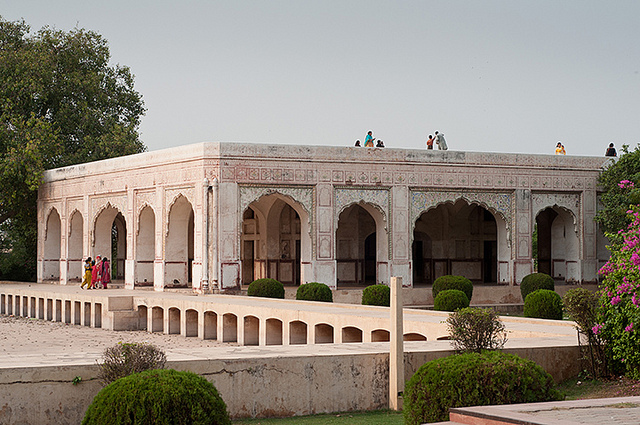
In case you didn’t know, Emperor Humayun was the son of Babur, the first emperor of the Mughal Empire. Babur, who’s actual name was Ẓahīr-ud-Dīn Muhammad, lived from 1483 to 1530. A direct descendant of both the conqueror Timur and Genghis Khan, Babur was deeply influenced by Persian culture from a very early age. Throughout his life, Babur led a series of successful military campaigns in northern India. These victories laid the groundwork for what would become the Mughal Empire.
When Babur died at the age of 47, his oldest son Humayun ascended to the throne. Humayun’s brother, Kamran Mirza, captured the city of Lahore in the 1530s and decided to build this baradari in 1540. Archeologists believe Kamran’s Baradari is the first authentic Mughal structure built in Lahore.
A baradari (Urdu: بارہ دری) is a traditional structure found throughout the Mughal Empire. The best way to describe the baradari in English is probably as a “summer pavilion.” However, “baradari” literally translates into “twelve doors.” As you probably could have guessed, the reason a baradari has this translation is because it has twelve doors in its design. These twelve doors are intended to capture the local breeze so the people inside here can cool off from the intense desert heat. All baradari are designed in the shape of a square and have three main entryways.
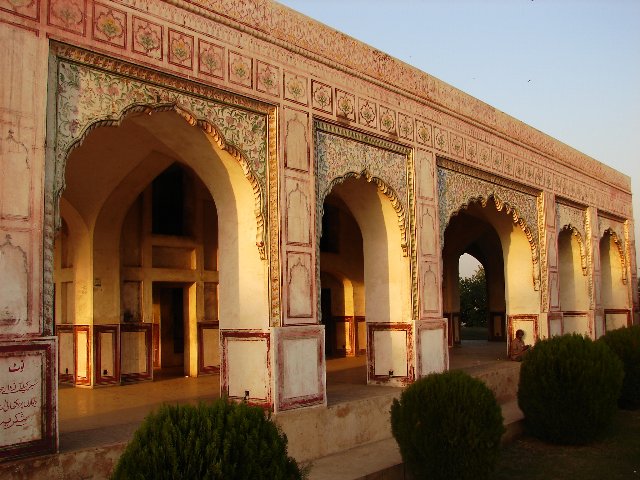
In addition to serving as excellent relaxation chambers, rulers often hosted entertainment events in their baradari chambers. There’s a long history of baradari being used for mujra dance, which was a traditional style of dance performed by courtesans in Mughal era India. Also, in keeping with the Persian tradition, many Mughal rulers would invite poets, musicians, and mystics to their baradaris. These baradaris were mostly used during the sweltering months of the summer.
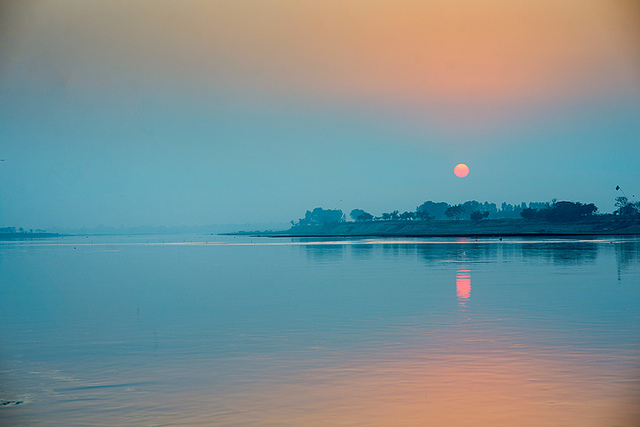
As with any other baradari, Kamran’s Baradari has twelve doors to let in cool air. This baradari also has twelve columns to hold its impressive balconies. Kamran’s Baradari has two stories. A few details on the pavilion, like cusped arches, suggest later innovations. Archeologists believe later emperors like Shah Jahan and Akbar might have added a few touches to this sumptuous pavilion. The only structure that survives fully intact is the original baradari constructed by Kamran Mirza. In case you were wondering, this baradari is made out of red sandstone.
The first time Westerners learned about this amazing building was in 1860s after Thomas Thornton’s exploration to Lahore. British Officer Thornton described Kamran’s Baradari in great detail in many of his letters home.
When the British took over Lahore, they made the Kamran Baradari into a toll house. Thanks to the structure’s location on the Ravi River, it was very easy for the British to collect tolls from boats that passed through this region.
Once Pakistan won its independence, locals immediately began to reconstruct Kamran Baradari. Estimates suggest Lahore’s local residents spend almost $1 million repairing this ancient pavilion.
Today, anyone can visit this baradari on the Ravi River. Kamran’s Baradari is actually located on the tip of an island in the Ravi River. This building is about a 15-minute drive away from the popular Walled City of Lahore.
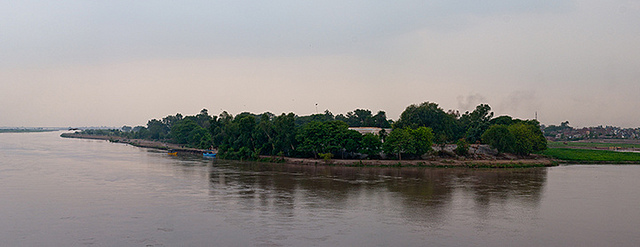
If you enjoyed Kamran’s Baradari, you might want to check out a few other baradaris around Lahore. Just a few of the other popular baradaris in Lahore include Wazir Khan’s Baradari, the Baradari of Kamran Mirza, the Ranjit Singh Baradari, and the Baradari at Shalimar Gardens. For people traveling further out in Pakistan, there’s a stunning baradari in Sheikhupura called the Baradari at Hiran Minar. The city of Sheikhupura, which was also a major city in the Mughal Era, is only a one-hour drive north of Lahore.
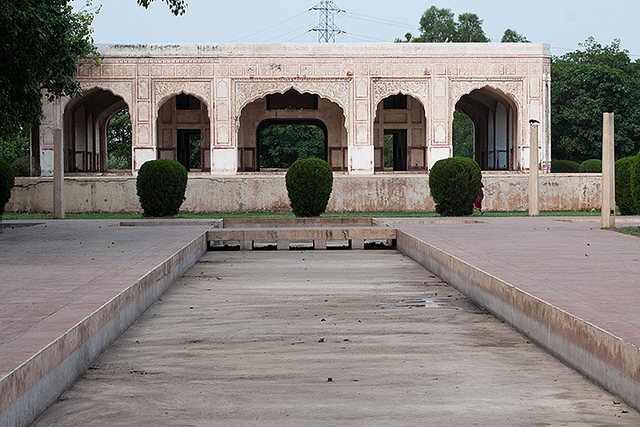
Of course, there are also plenty of stunning baradaris throughout India. One city that has tons of baradaris is Delhi. Here you’ll find the Heera Mahal Baradari and and the Baradari at Roshanara Bagh. Another wonderful baradari in India is called the Taramati Baradari in Hyderabad.
As you can see, the baradari was a popular form of architecture during the Mughal Empire. Examples of this style can be found not only in Lahore, but also throughout the Indian subcontinent. It’s fun to imagine the amazing people and events that took place at these summer pavilions all those years ago.
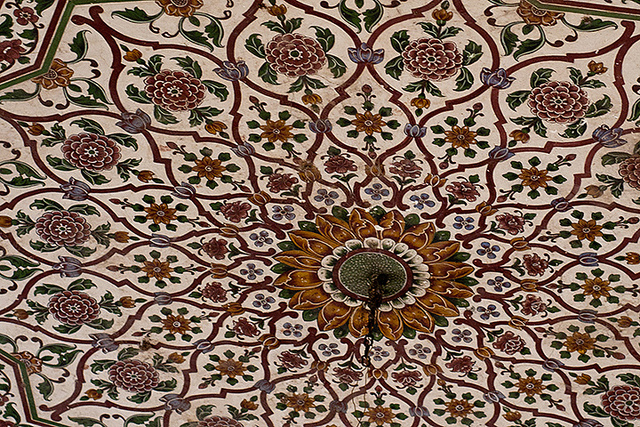
Since Kamran’s Baradari was the first ever constructed by a Mughal official, it holds a special place in the hearts of Pakistanis. Although there’s a great deal of Persian influence, you can already notice a few of the defining features of what would become the Mughal style in this early architectural achievement. The soothing flow of the Ravi River as well as the cool breeze within the summer pavilion will put you into a deep state of relaxation and reverie.
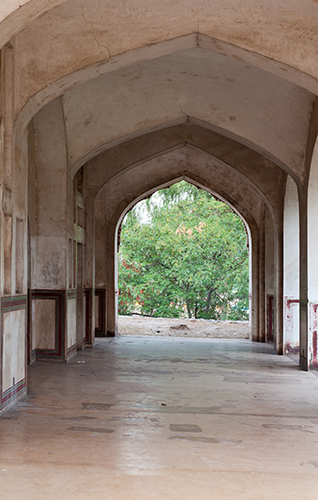
While Kamran’s Baradari isn’t in the central historical area of Lahore, it’s well worth the time and effort to drive out to this old summer pavilion. Yes, it might not be as grandiose as buildings in the Walled City of Lahore, but Kamran’s Baradari is one of the most important both for its age and excellent state of preservation. Standing in this baradari will teach you about the very beginning of the Mughal Empire and inspire you to learn more about the long history of this fascinating corner of the world.
*Photo Credit Usman Ahmed



